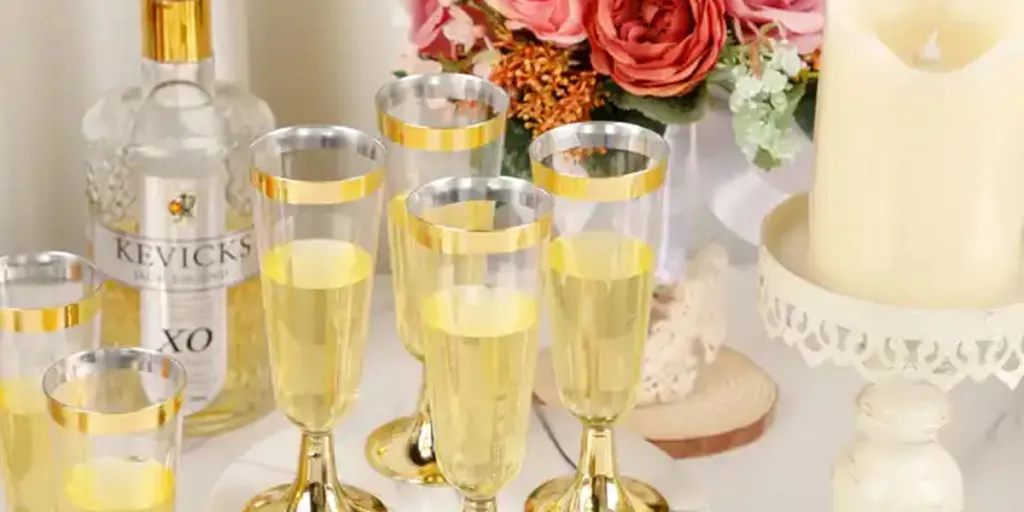Few people know or want to know all the technical details of what goes into making or selecting the right champagne glass. All that matters is that they search for stemware that they like. It is up to retailers to read their potential customer market to determine which styles they will like most.
Typically, it is best for retailers and online stores to stock as many types of champagne glasses as possible. With variety, customers can pick and choose what they prefer. And as global trends support the sales of these glasses, it is a good idea to have enough variety. In that way, you can make customers happy so they can prepare well for special occasions.
However, with all the options on the market today, this guide will ensure you can invest in a selection that your buyers will love in 2024.
Table of Contents
Growth projections for champagne glass sales
Champagne glass designs
Champagne glass materials
Wrapping up the champagne glass offering
Growth projections for champagne glass sales
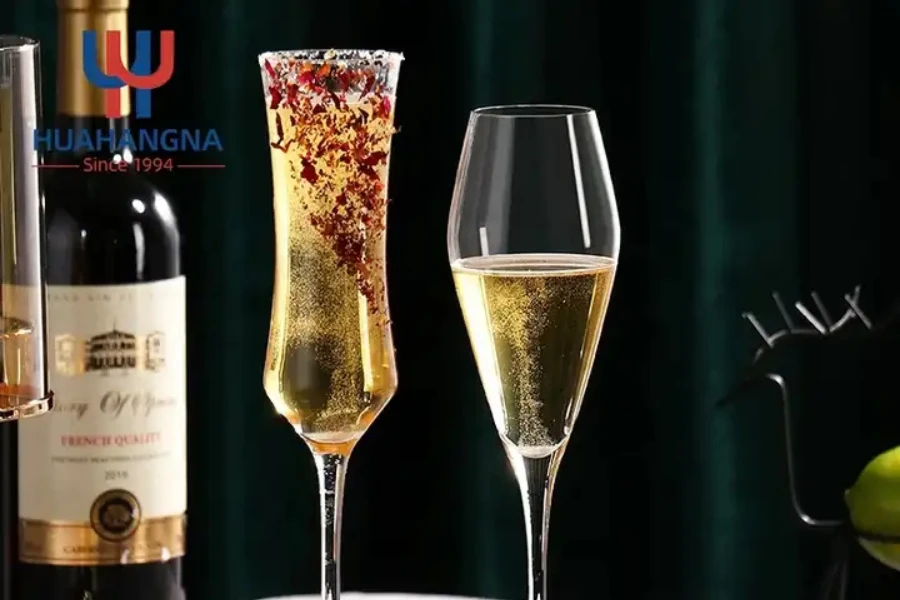
According to research conducted by Data Intello, champagne glass sales will grow at a compound annual growth rate of (CAGR) 5,5% between 2022 and 2031. Hotels, bars, and individual customers are the biggest buyers of champagne glasses. Moreover, North America, Europe, and Asia-Pacific countries comprise the largest markets.
Keyword search indicators
Keyword searches for champagne glasses on Google Ads soared to 201,000 in December 2022 and January 2023. These figures fluctuated throughout the year, stabilizing at 90,500 monthly searches on average. However, festive periods will almost certainly see these search figures rising again.
Factors behind champagne glass sales
Major growth factors promoting sales are:
- Increasing middle-class and disposable incomes in developing countries.
- Higher incomes lead to more luxury purchases like champagne and champagne glasses.
- The hospitality industry has made cocktails popular, often using Prosecco for Mimosas. Consequently, more champagne glasses are needed for these drinks.
- Glassware manufacturers are creating high interest levels in Millennials due to innovations in designs and materials used to make champagne glasses.
Champagne glass designs
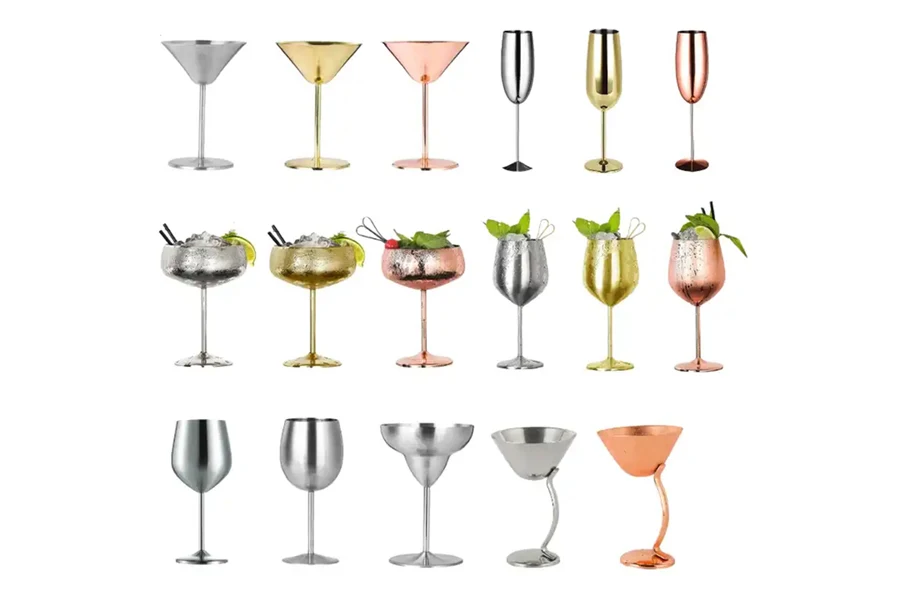
Glass styles differ significantly from tulip flutes and coupes to retro styles with long stems and square bottoms. Here, we discuss the most popular designs for champagne and sparkling wine.
Champagne flutes
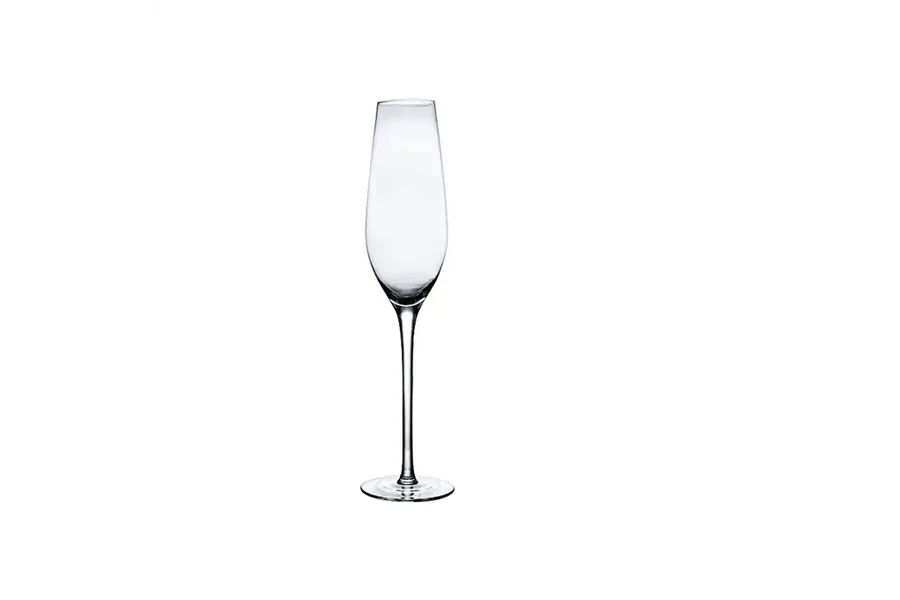
These glasses have long, narrow “bowls” on long, thin, delicate stems, holding a good volume of champagne. And because the surface area at the mouth of the champagne flute is small, the sparkling wine holds its bubbles longer than coupe glasses. Although made for champagne and sparkling wine, people also use them as wine glasses.
Champagne tulip flute
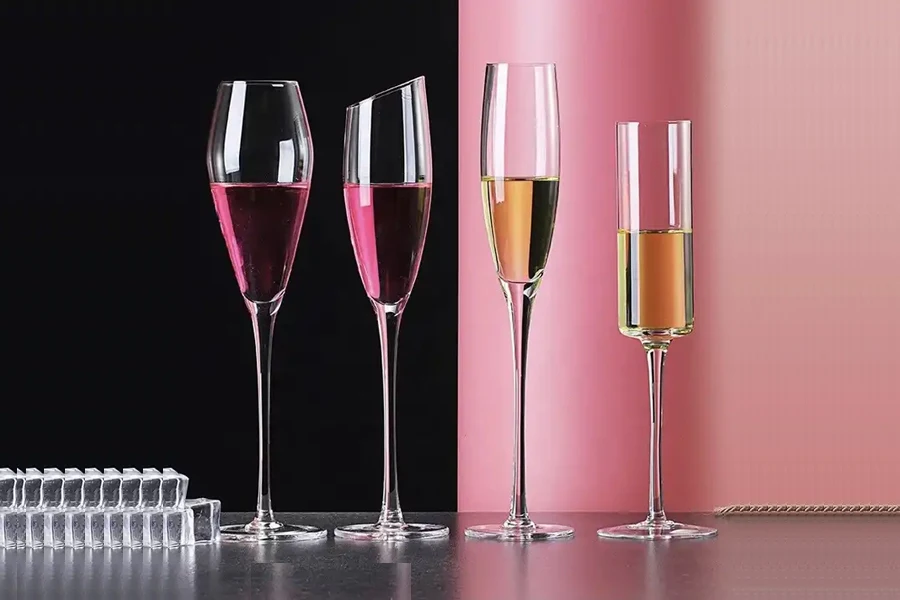
Similar to the previous flute, the tulip flute glass is also tall and slender. However, it gently flares out towards the middle, slowly narrowing towards the mouth, giving it the appearance of a tulip. Like other flutes, the small surface at the mouth of the glass reduces rapid carbonation or loss of bubbles.
In fact, there are numerous flute designs on the market. This variety is due to manufacturers experimenting with their creative skills to satisfy Millennium preferences.
Coupe
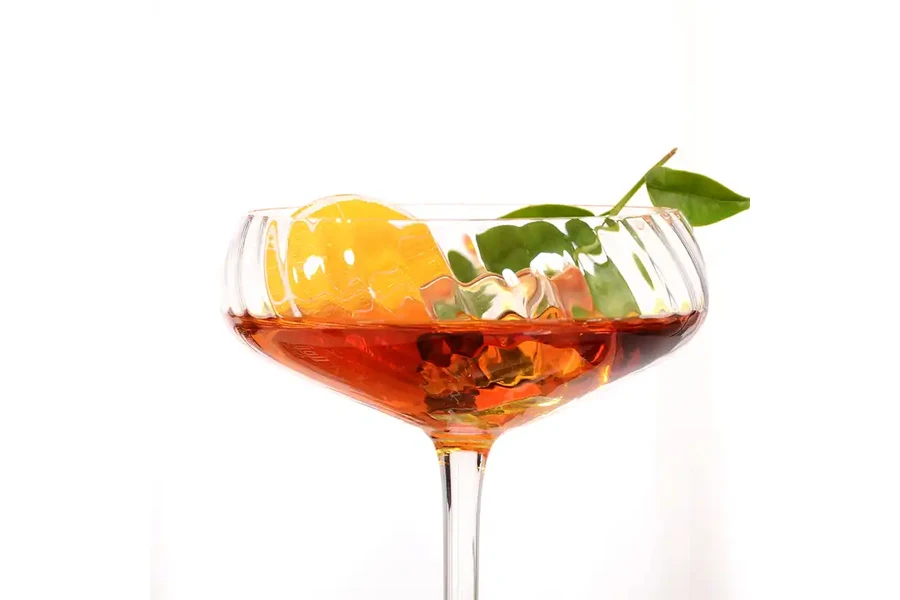
Coupe glasses are the predecessors of champagne flute glasses. They have a broad mouth settled on a thin stem. Because of the broad surface, champagne can rapidly go flat if not quickly consumed. However, the coupe’s design ensures a deeper aroma than the flute.
Barmen and servers also favor coupes as the balanced design makes them easier to twirl.
Double-wall stemware
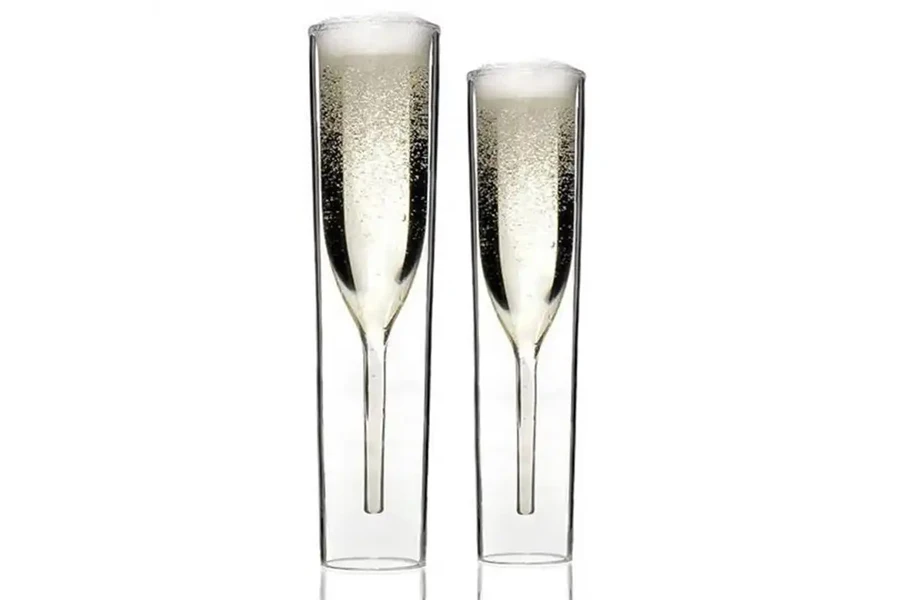
Glasses with two layers are called double-walled stemware. Having two layers of glass in one means excellent insulation for the beverage. Insulation keeps the sparkling wine cold and prevents temperature changes from impacting the drink. Besides this, double walls also mean that these glasses have a unique appearance.
Vintage retro glasses
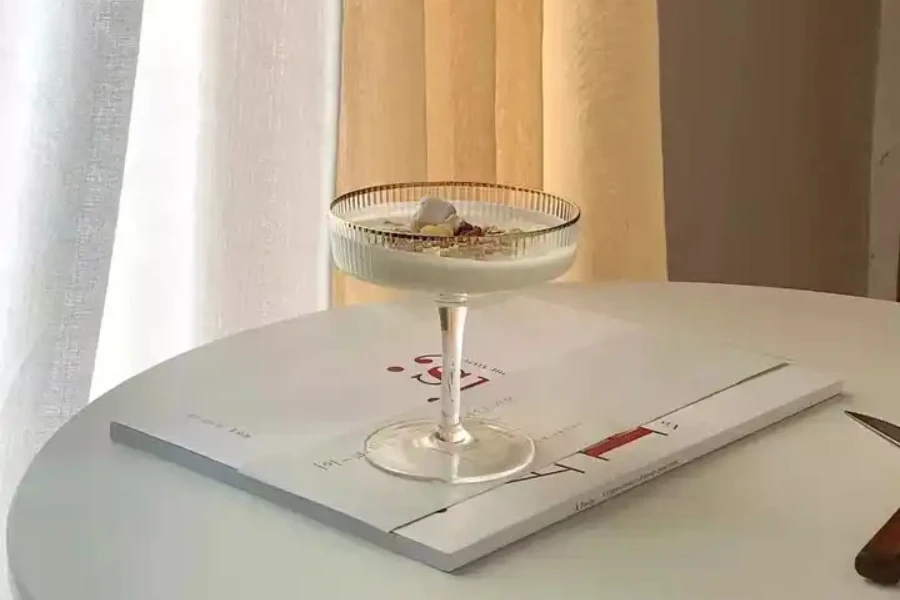
Although coupe or bowl glasses can be considered vintage, there are more retro vintage glasses on the market. These champagne glass designs typically have a longer “bowl” shape. This shape is either gently rounded or square.
Also, vintage and retro glassware has more embossing. They’re more elaborate – fit for royalty and times gone by – if you prefer a more traditional glass for your celebration.
Champagne glass materials
Like the designs, champagne glasses are made from many different materials. Here are some of the most common:
Lead crystal champagne glasses
What makes crystal glass crystal is its composition. Ingredients like silicon, lead, sodium, iron, and others are included to make crystal glass.
Glasses with lead are seldom made due to health concerns. But leaded champagne glasses are heavier than others, giving them an air of distinction.
Lead crystalware is stronger but thinner than ordinary glass. The cuts on this type of glass also have softer edges than on ordinary glass.
Unleaded/lead-free crystal
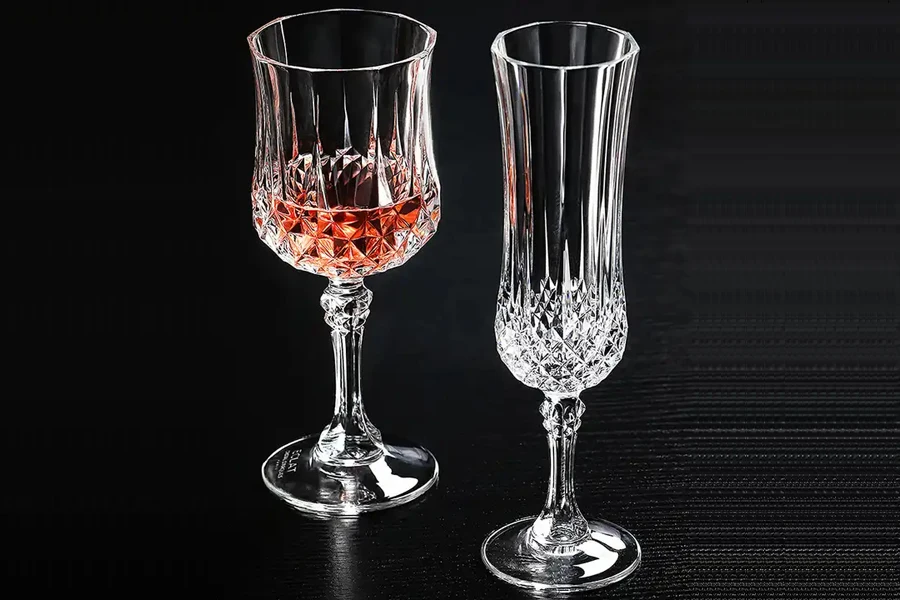
This material is practically the same as leaded crystal, except it comes without the lead. Because the glass is crystal, it adds to the sparkle of champagne, with light refractions bouncing different colors off the glass. Crystal glass is also clear and brilliant, adding to its allure on any occasion, whether a birthday or an anniversary.
Standard glasses
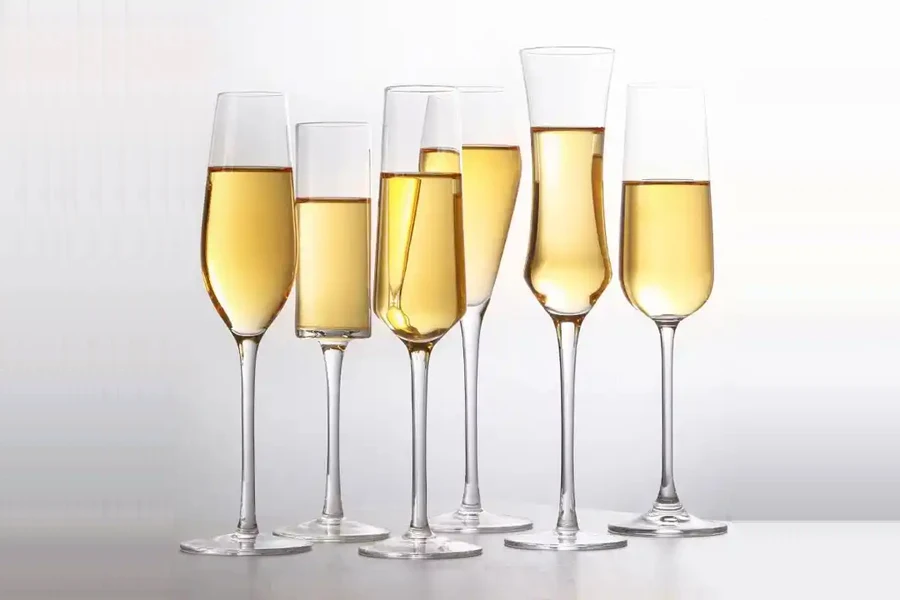
Champagne glasses are also made from standard glass. This glass can either be thin and delicate or thicker and stronger. But regular glass will never be as thin and strong as crystal glassware as it doesn’t have the necessary additives.
Metal champagne glasses
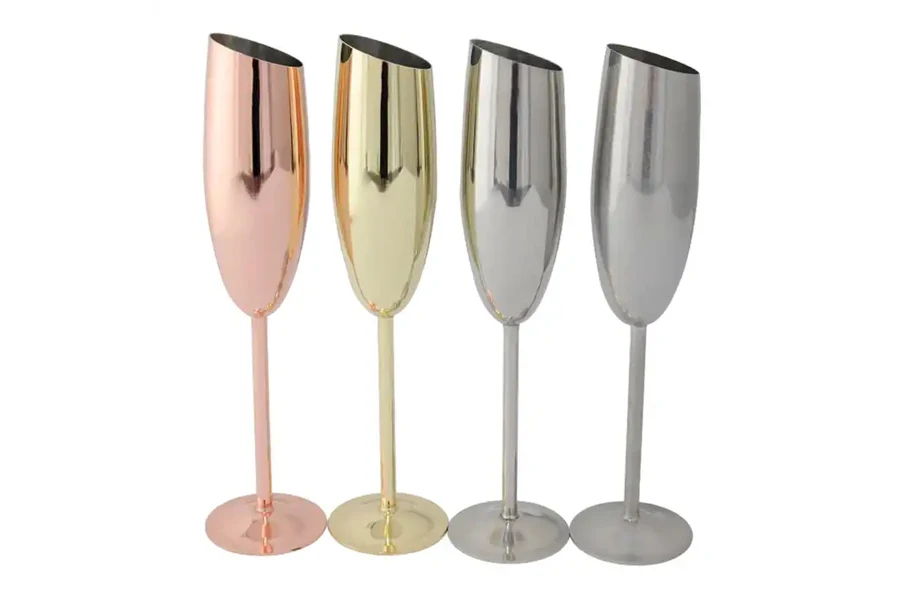
Manufacturers have become truly creative as they have been making stainless steel champagne coupes for a while. These coupes sometimes have a double wall with an insulating vacuum in between. Consequently, this feature keeps champagne cold.
Stainless steel champagne glasses are also durable. Like other materials, they come in many colors.
Polypropylene plastic
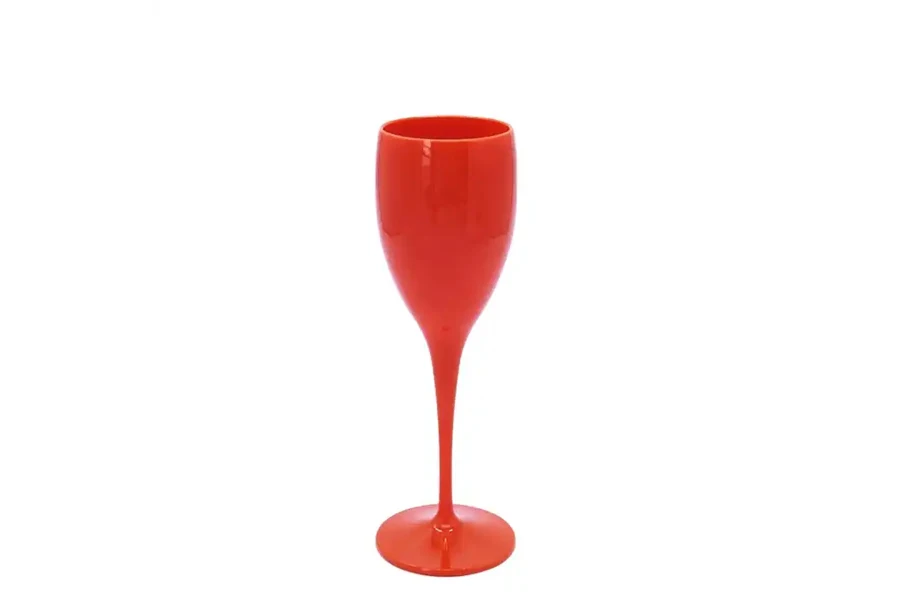
PP or polypropylene plastic is different from ordinary plastic. It has high levels of heat resistance, is durable, and is cheap. Although not many people want to drink champagne from a plastic glass, it is a practical choice for large groups of people, especially in the outdoors.
This material can be susceptible to UV rays, aromatics, and other substances. Because of their susceptibility to wear and tear, users should discard these glasses when they show damage.
Other materials
Other goblets or champagne glasses may look like they are made from bronze or brass. Often, they are made from bone China or ceramic.
Wrapping up the champagne glass offering
Champagne glasses go by many names and types. They have a range of designs and multiple colors and are fabricated from diverse materials. But one thing that they all have in common is that they are beautiful.
Buyers can explore the Chovm.com showroom to see the massive variety from many countries. This diversity makes it easier to stock champagne glass sets that appeal to a broad market. So, we encourage you to build relationships with suppliers and then increase your inventories for year-round festive occasions.
